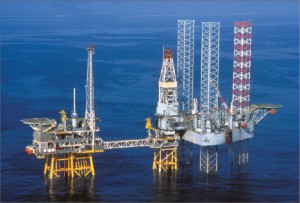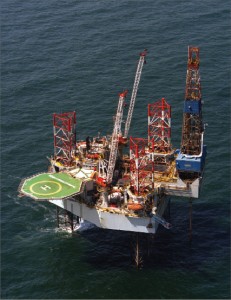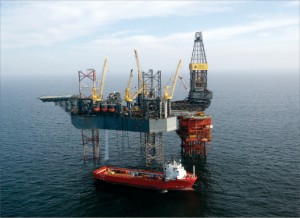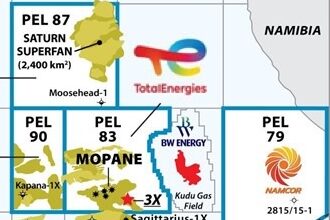North Sea discoveries: UK’s Tybalt, Catcher, Norway’s Draupne, Beta among hot prizes
By Jeremy Cresswell, contributing editor
These are tough times for the North Sea. Even though oil prices are reasonably buoyant, the situation for natural gas is less positive.
Coupled with multiple impacts from the banking crisis and recession, it means that drilling activity has been somewhat depressed, although 2009 was better than 2008 and the current year is shaping up reasonably.

According to Andrew Vinall of drilling analysts Hannon Westwood, the total number of spuds (excluding sidetracks) by the end of May for the Norwegian sector is 20, comprising 17 exploration and three appraisal. This compares with 19 spuds in the UK.
Counting sidetracks and re-entries, there have been 25 Norwegian spuds, including one exploration sidetrack of a well started in 2009 and one re-entry.
The total number of Norwegian sector discoveries declared to the end of May this year is eight, of which two were spud in 2009 so are excluded from reserve declarations for the year. Declared reserve additions from exploration over the five months of January through May this year is in the range 81–213 mmboe. The UK figure is around 130 mmboe.
So what stands out among the current crop of discoveries – that is, those made in recent months?
Starting in the UKCS, the ones that catch the eye are Tybalt (211/8-c4), Catcher and Cygnus. Two are oil, and the third may be the largest British gas find in years.
TYBALT
A name from Shakespeare’s Romeo and Juliet, Tybalt had been lying around the attics of several North Sea operators for years, somehow not quite making the grade. But for current operator Valiant, it is shaping up to be a major prize.
Mr Vinall recalled that the original well was drilled around 1974 by Hunt. There was a “sniff” of hydrocarbons.
The next well, drilled into Magnus sands, encountered thick water-bearing sands, possibly down-dip from the main BP-operated Magnus field. The debate became whether this was a dip or stratigraphic closure, and it took modern data-interpretation techniques to get to the bottom of what the prospect might be.
“It started out as a small dip closure. It may not be commercial, but there was also an up-dip pinch-out,” Mr Vinall said. But were the two connected? The drilling that has just taken place appears to suggest that they are connected.
The pre-drill P50 estimate for Tybalt was 35 million bbl of oil, although Mr Vinall had estimated 46 million bbl. Now he is talking about 92 million bbl, and the find may be bigger still.
“I would say it’s a commercial discovery, but Valiant has a number of other wells that it wants to drill up in the area anyway, and so it could actually become quite a significant area in the future. I think this is one to watch.”
CATCHER
The next pick is Catcher. As operator Encore said on 3 June: “The 28/9-1 well was drilled to a TD of 5,219 ft (1,590 m) measured depth, having successfully encountered excellent-quality oil-bearing reservoir sandstones at 4,600 ft (1,402 m) at the target Cromarty Sandstone level. A potential oil/water contact has also been intersected at 4,840 ft (1,475 m).
Initial analysis indicates the discovery of a minimum 240-ft (73-m) oil column, with a calculated net pay of 90 ft (27 m). Extensive sampling and pressure testing have been carried out.
Catcher is significant in that a number of wells had been drilled on this Cromarty play in the past but without success.
The nearby Bittern field is a Cromarty sand reservoir and is currently perhaps the only UKCS asset with a Cromarty sand reservoir.
Mr Vinall said of Encore’s strategy: “It was high-risk and based on cyclic attribute analysis. It has paid off, and they’re now sidetracking the well into what they think is a Tay sand with a similar amplitude anomaly. It may be connected. It may also be a separate structure.
“The reserves number that’s being bandied around indicates about 50 million barrels, and I think it came in better than they expected.

“Catcher has a significantly light crude … not far off Brent quality by the sound of it. For its depth and location … a long way from the Graben edge … it’s a very light crude.
“If you go just 15 km to the north, you have 28/3 … the Elke discovery, which is very heavy oil; and bit further north there is Pilot, which Venture gave up on because they couldn’t see a way of getting the oil out of the ground,” Mr Vinall said.
CYGNUS
Arguably the most exciting active gas find in UK waters is Cygnus … because it appears to be large by UKCS standards (more than 1 trillion cu ft) and is convenient to southern markets on both sides of the North Sea.
Cygnus straddles blocks 44/12a and 44/11a and was refound by Venture Production (now part of Centrica). The first exploration well was drilled by Marathon in 1989. Gas was encountered and, although it appeared sub-commercial, it proved the presence of Rotliegend sand on the northern side of a “salt pit lake” in the northern part of the UKCS Southern Gas Basin, north of the region’s Carboniferous play.
According to Mr Vinall, it is a mix of horizontal, tight-gas drilling techniques and modern seismic that opened the door to Cygnus.
Venture drilled a well almost twinning the Marathon original, since when appraisal work has resulted in the reserves estimate going up, up and up.
“I think the reserves figure currently stands around 550 bcf and still rising,” Mr Vinall said. “It depends who you listen to and how much hype you’re prepared to accept. But the conservative feeling is that reserves are 800 bcf to 1 TCF.
“People have been talking about more gas at Cygnus than Breagh (another recent big gas find in the Southern Gas Basin), but I think one would have to be stretching credulity to go to the 2 TCF that one company has tried to suggest.”
Draupne, Beta and Mandarin are the Norwegian choices.
DRAUPNE
DNO’s Draupne field is considered a prominent example of returning to previously explored acreage. The company’s 16/1-11 well is designed to delineate the Draupne find made via well 16/1-9 in 2008.
The appraisal was drilled to a planned total depth of 8,612 ft (2,625 m), and a 187-ft (57-m) hydrocarbon column has been identified in the same reservoir interval as was encountered with the original well.
The appraisal also found non-movable oil in the deeper formations of Triassic age.
The upshot is that, in May, DNO and its partners revealed that Draupne reserves were around 150 million bbl/day of oil equivalent, ranking it as one of the largest Norwegian finds for several years.

On 10 May this year, DNO chief executive Erik Haugane said in a statement: “The volumes we are looking at now are larger than previously estimated, and we will continue to work on development solutions that could yield first oil already in 2014.” The company is weighing a combined development of Draupne with two neighbouring discoveries, Hanz and West Cable.
BETA
It was in July last year that Petro-Canada, now a unit of Suncor, was granted consent to drill well 34/4-11, located in the northern portion of the Norwegian sector of the North Sea, some 15 km north-northwest of Snorre B.
By January 2010, Petro-Canada had completed drilling its Beta wildcat. The objective was to prove petroleum in the Brent group in middle Jurassic rocks and in the Dunlin group and the Statfjord formation in Lower Jurassic rocks. Well 34/4-11 proved oil in the Brent group and in the Statfjord formation, with Petro-Canada saying that further appraisal would be required. The partners have been prepared to talk in terms of a high-grade crude discovery in the range 44-252 million bbl of recoverable oil.
MANDARIN
BG spudded its NCS Mandarin probe in November last year and was still drilling ahead at the time of writing. The high-pressure, high-temperature target lies in a deep Rotliegend play and, if it comes in, would rank as the first Central North Sea Rotliegend discovery, and that is significant in Mr Vinall’s opinion.
“Shell tried Quasi Modo a couple of years ago. That was the most likely in the UK sector, but it was dry. With Mandarin, they obviously haven’t had any difficulties because the well hasn’t been sidetracked. It’s just a very long well.”
When BG gained consent to drill 1/3-12 S using the Rowan Gorilla VI jackup, the company said the estimated duration would be 181 days.
CONAN FAILURE
And, finally to the biggest current failure … Serica’s Conan probe, drilled in the East Irish Sea.
113/26b-3 took just over two weeks to drill, spudding on 10 May this year. By 27 May, news of the Conan failure was headline news, and Serica’s share price took a heavy tumble.
The target of the well was the gas potential of the Triassic-age Sherwood Sandstone, which is the principal producing reservoir in the existing gas fields in the East Irish Sea. The well was plugged and abandoned as a dry hole, the bit having penetrated to 5,994 ft (1,827 m).
While Serica shrugged its shoulders and said it would move on to Oates, another Irish Sea prospect, Mr Vinall said Conan was a big disappointment.
“Amplitude-driven, they did a lot of fancy footwork on that to prove that it was a structural closure. The amplitudes were suggestive of hydrocarbon. And yet when they drilled, they found that hydrocarbons were absent. If it had come in, it would have been the biggest gas discovery in the UK for years, or at least be the equivalent of a Breagh or Cygnus.”




